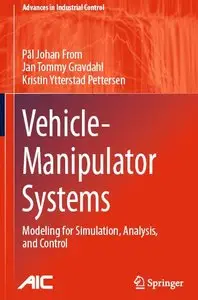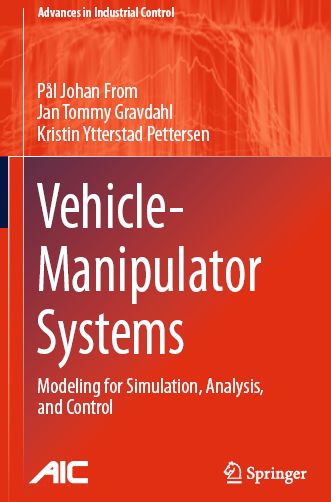Vehicle-Manipulator Systems: Modeling for Simulation, Analysis, and Control (Advances in Industrial Control) by Pål Johan From, Jan Tommy Gravdahl and Kristin Ytterstad Pettersen
English | 2013 | ISBN: 1447154622 | 420 pages | PDF | 4,5 MB
English | 2013 | ISBN: 1447154622 | 420 pages | PDF | 4,5 MB
Furthering the aim of reducing human exposure to hazardous environments, this monograph presents a detailed study of the modeling and control of vehicle-manipulator systems. The text shows how complex interactions can be performed at remote locations using systems that combine the manipulability of robotic manipulators with the ability of mobile robots to locomote over large areas.
The first part studies the kinematics and dynamics of rigid bodies and standard robotic manipulators and can be used as an introduction to robotics focussing on robust mathematical modeling. The monograph then moves on to study vehicle-manipulator systems in great detail with emphasis on combining two different configuration spaces in a mathematically sound way. Robustness of these systems is extremely important and Modeling and Control of Vehicle-manipulator Systems effectively represents the dynamic equations using a mathematically robust framework. Several tools from Lie theory and differential geometry are used to obtain globally valid representations of the dynamic equations of vehicle-manipulator systems.
The specific characteristics of several different types of vehicle-manipulator systems are included and the various application areas of these systems are discussed in detail. For underwater robots buoyancy and gravity, drag forces, added mass properties, and ocean currents are considered. For space robotics the effects of free fall environments and the strong dynamic coupling between the spacecraft and the manipulator are discussed. For wheeled robots wheel kinematics and non-holonomic motion is treated, and finally the inertial forces are included for robots mounted on a forced moving base.
Modeling and Control of Vehicle-manipulator Systems will be of interest to researchers and engineers studying and working on many applications of robotics: underwater, space, personal assistance, and mobile manipulation in general, all of which have similarities in the equations required for modeling and control.



